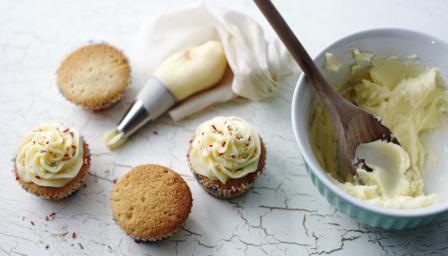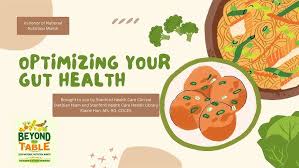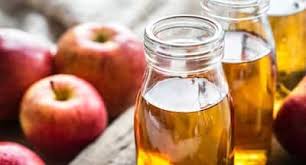Icing Recipe: Icing is a sweet, creamy topping used to enhance the flavor and appearance of baked goods like cakes, cupcakes, and cookies. It’s made by combining sugar with liquid and fat, which can vary based on the desired consistency and taste.
The smooth texture and glossy finish of icing make desserts irresistible. But it’s not just about looks—icing adds moisture, flavor, and a celebratory touch that makes any dessert special.
Common Types of Icing Used in Baking
There’s a variety of icing types suited to different purposes:
- Buttercream: Soft and creamy, perfect for piping and spreading.
- Royal Icing: Ideal for intricate decorations and cookies.
- Chocolate Ganache: Rich and glossy, often used for a luxurious finish.
- Glaze Icing: A simple, thin icing for drizzling over pastries and donuts.
Tools and Ingredients Needed for Making Icing
Essential Tools for a Perfect Icing
- Mixer: Stand or handheld mixer for smooth blending.
- Spatula: Silicone or offset spatula for spreading icing evenly.
- Piping Bags and Tips: For intricate designs and writing.
- Mixing Bowls: Large bowls to hold and mix your icing ingredients.
- Measuring Cups and Spoons: For precise measurements.
Must-Have Ingredients for Homemade Icing
- Powdered Sugar: The base ingredient for most icing recipes.
- Butter or Margarine: Provides a creamy base for buttercream icing.
- Milk or Cream: Adjusts consistency and adds richness.
- Flavorings: Vanilla extract, almond extract, or citrus zest for taste.
- Food Coloring: To create vibrant icing for decoration.
Step-by-Step Guide to Making Basic Buttercream Icing
Ingredients for Buttercream Icing
- 1 cup (2 sticks) unsalted butter, softened.
- 4 cups powdered sugar, sifted.
- 2-3 tablespoons milk or cream.
- 1 teaspoon vanilla extract.
Instructions for Preparing Buttercream Icing
- Beat the Butter: In a large bowl, beat the softened butter using a mixer on medium speed until it becomes creamy and pale.
- Add Sugar Gradually: Slowly incorporate powdered sugar, one cup at a time, mixing well after each addition to prevent lumps.
- Add Milk and Vanilla: Pour in milk and vanilla extract, and continue beating until the icing reaches your desired consistency. If it’s too thick, add a splash of milk; if too thin, add more powdered sugar.
- Whip Until Fluffy: Increase the speed of your mixer to high and whip for about 2-3 minutes until the icing is light and fluffy.
Tips for Achieving the Perfect Buttercream Consistency
- Ensure the butter is softened but not melted for the best texture.
- Sift the powdered sugar to avoid clumps in your icing.
- Adjust the liquid quantity gradually to avoid over-thinning the icing.
How to Make Royal Icing for Decorative Work
Key Ingredients for Royal Icing
- 4 cups powdered sugar, sifted.
- 3 tablespoons meringue powder or 2 egg whites.
- 5-6 tablespoons water.
- Gel food coloring (optional).
Step-by-Step Instructions to Make Royal Icing
- Mix Ingredients: In a mixing bowl, combine powdered sugar and meringue powder. Gradually add water, mixing at low speed until ingredients are fully incorporated.
- Beat Until Stiff Peaks Form: Increase the mixer speed to medium-high and beat until the icing forms stiff peaks. This typically takes 7-10 minutes.
- Adjust Consistency: Add water a few drops at a time if the icing is too stiff for spreading or piping.
Coloring and Storing Royal Icing
- Divide the icing into separate bowls and add gel food coloring as desired. Mix thoroughly.
- Store unused icing in an airtight container with plastic wrap touching the surface to prevent crusting.
Variations and Flavors to Enhance Your Icing
Adding Flavors to Buttercream Icing
- Use citrus zest (lemon, orange) for a tangy twist.
- Add a spoonful of espresso powder for coffee lovers.
- Substitute vanilla extract with almond or peppermint extract for a unique flavor profile.
Chocolate Ganache as an Alternative Icing
Chocolate ganache is a simple two-ingredient icing made from chocolate and heavy cream. Heat equal parts of cream and chocolate, stir until smooth, and pour over cakes or cupcakes for a decadent finish.
Troubleshooting Common Icing Problems
Fixing Runny or Too-Thick Icing
- Runny Icing: If your icing is too thin, add powdered sugar one tablespoon at a time until the desired consistency is achieved. This thickens it without compromising sweetness.
- Thick Icing: Gradually mix in milk or water, one teaspoon at a time, to thin it out for smoother spreading or piping.
How to Avoid Icing Cracks on Cakes
- Always apply a crumb coat before adding the final layer of icing.
- Let the cake cool completely before icing to prevent heat from softening and cracking the icing.
- Use a cake turntable for an even application of icing, reducing the chance of cracks caused by uneven layers.
Creative Ways to Use Icing
Icing for Cupcakes and Cookies
- For cupcakes, swirl buttercream using a piping bag with a star or round tip. Experiment with multi-colored effects by using different icing hues in the same bag.
- On cookies, use royal icing to outline the edges before flooding the surface with a thinner consistency. This creates clean, professional designs.
Layering and Decorating Cakes with Icing
- Use icing as a glue to stick layers of cake together. A thin layer between each tier ensures stability.
- Create decorations like flowers, rosettes, or intricate patterns using different piping tips.
- Experiment with stenciling designs by dusting powdered sugar or cocoa powder over a stencil on iced cakes for a sophisticated look.
FAQs about Icing Recipe
1. What is icing, and how is it different from frosting?
Icing is a thin, glossy coating made from sugar and liquid, typically used to glaze cakes or cookies. Unlike frosting, which is thicker and creamier, icing dries quickly and provides a smooth, shiny finish.
2. What are the common ingredients in an icing recipe?
The main ingredients include powdered sugar (confectioners’ sugar), a liquid like water, milk, or lemon juice, and optional flavorings such as vanilla extract or almond extract. Some recipes may also include butter for richness.
3. Can I make icing without powdered sugar?
Yes, you can use granulated sugar to make icing by blending it into a fine powder or opting for alternative sweeteners like honey or maple syrup for a different texture and flavor.
4. How do I thicken or thin icing?
To thicken icing, add more powdered sugar. To thin it, mix in small amounts of liquid (water, milk, or juice) until you achieve the desired consistency.
5. How long does icing take to dry?
Depending on the thickness, most icing recipes dry within 15-30 minutes at room temperature. Royal icing, used for decorating cookies, can take a few hours to fully set.
6. Can I store leftover icing?
Yes, store leftover icing in an airtight container in the refrigerator for up to a week. Re-whisk or add a splash of liquid before using to restore its consistency.
7. What are the best tips for icing cakes and cookies?
Ensure the baked goods are completely cool before applying icing to prevent melting. Use a piping bag or a spatula for precise application, and let the icing set before stacking or serving.
8. Can I color icing?
Yes, food coloring (gel or liquid) can be added to icing for vibrant hues. Add color gradually to achieve the desired shade.
Conclusion
Making icing at home is an art that enhances the taste and presentation of your baked creations. Whether you’re crafting buttercream for a classic birthday cake, royal icing for holiday cookies, or exploring creative flavors, following the right steps ensures perfect results every time. Remember, the key to excellent icing is patience, practice, and a touch of creativity. Start small, experiment with variations, and soon you’ll master the skill of making icing that not only looks amazing but tastes heavenly!



